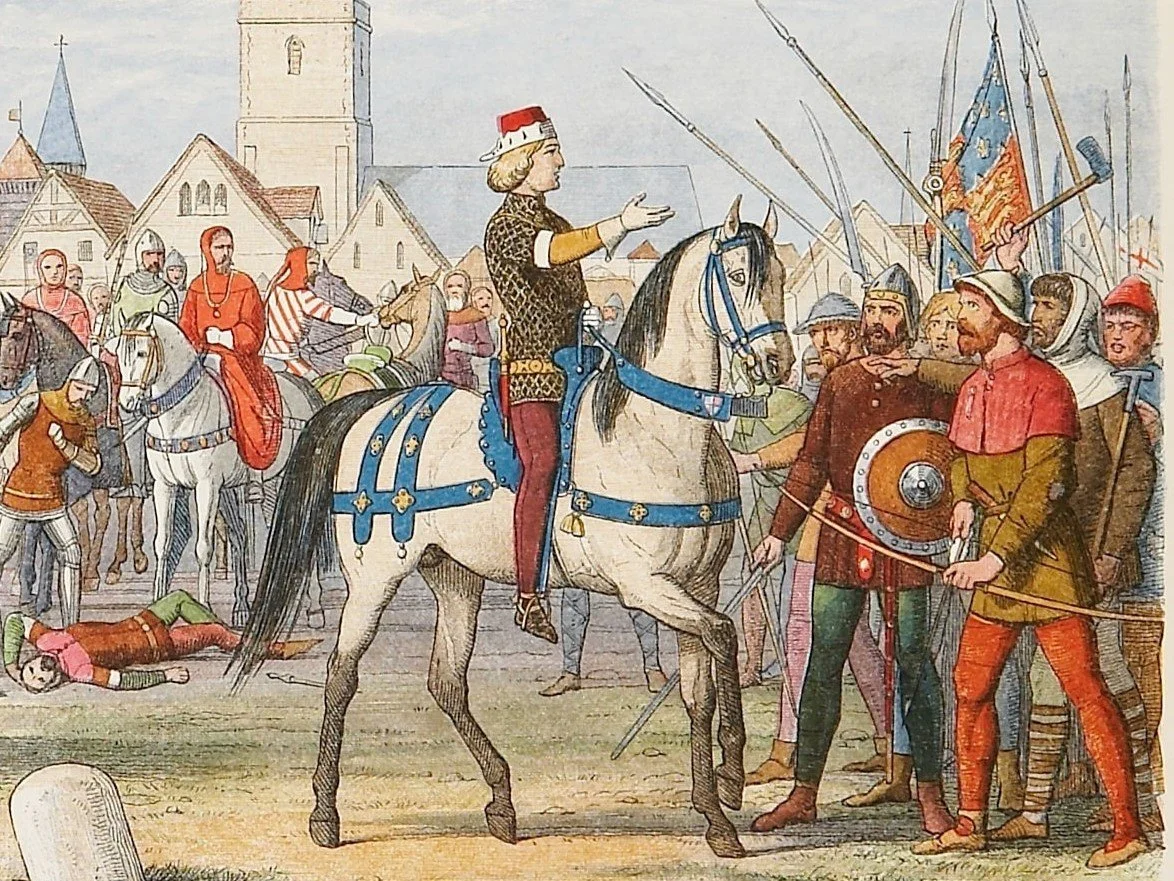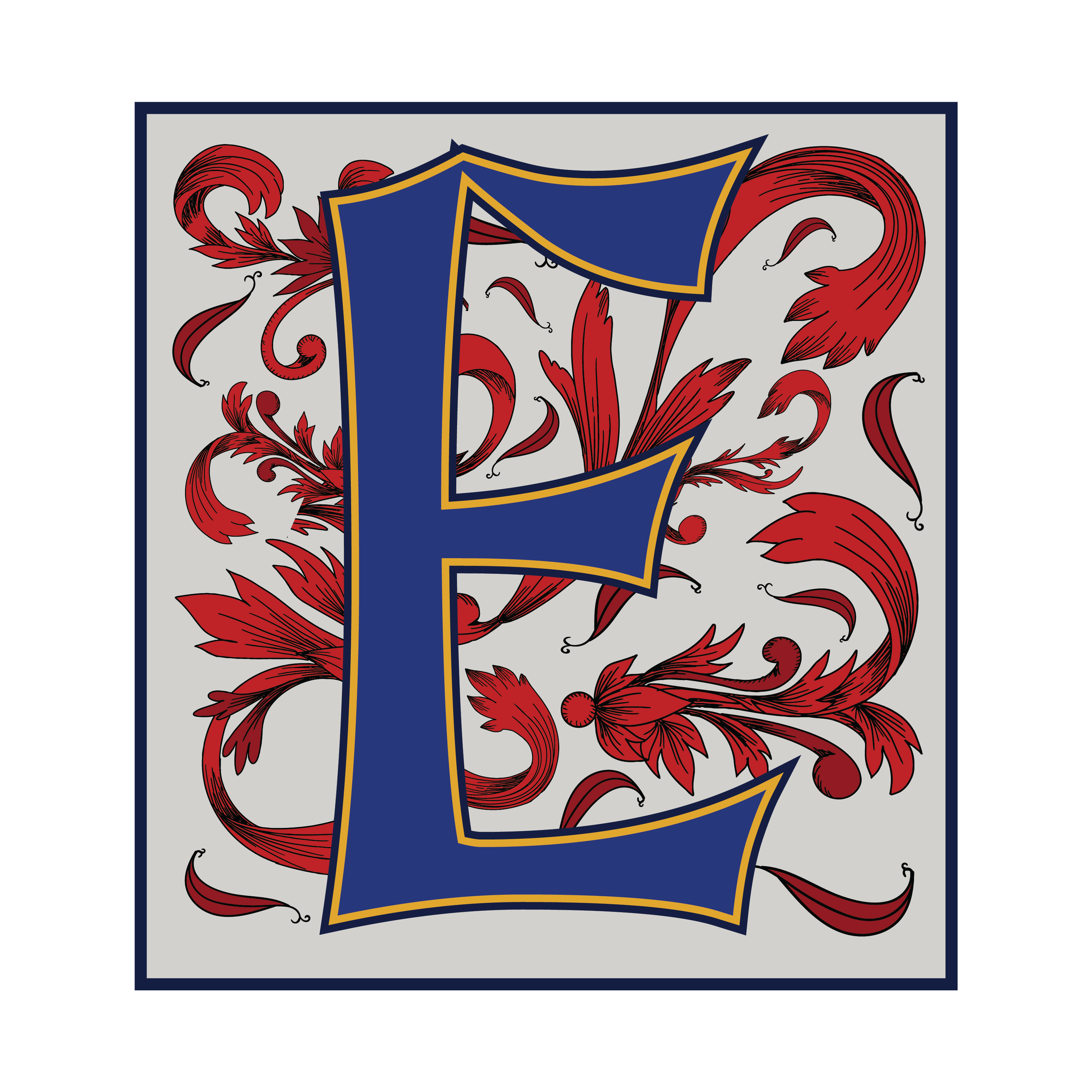Wat Tyler and the Airing of Grievances
England’s peasants were sick and tired of being sick and tired. Over-taxed, under-paid, war-weary, and stirred up by religious ideas about equality, they set out to change the world.
(This is part two of three about the English Peasants’ Revolt of 1381)
In May 1381, southeastern England had had it. The rebel preacher John Ball traveled widely in Essex, preaching his fiery sermons about social equality. When the royal tax collector came around to collect for the hated Poll Tax, the villagers resisted and wouldn’t pay. They booted out the king’s pencil-pusher and sent him packing.
The king was not pleased. He needed his sweet, sweet tax revenues to keep fighting France. So, the 14-year-old King Richard II sent in armed soldiers to uphold law and order and collect the tax. The villagers wouldn’t have it and booted out the soldiers too. Clearly, the common people needed to take action. They needed to go see the king.
Serfdom had been in decline for decades by 1381, but now it was at the breaking point. The old social order just wasn’t working anymore. The discontent was not confined to just an unwashed horde of the poorest of the poor. All classes of commoners were fed up, with quite a few upper-tier merchants and artisans in the mix. Also, this wasn’t just the lads; women were active at all levels of the revolt.
Many groups of peasants started marching towards London. They coalesced around a leader, Wat Tyler. (Walter the Roof-Tiler) The crowd burned down buildings, torched tax records, and freed prisoners from royal jails. But this wasn’t just random violence. For the most part, it was targeted against the most hated institutions, people, and symbols of power in the land.
In June 1381, Wat Tyler stood at the head of an angry mob of peasants at the gates of the city of London. The rebels tried to persuade the guards to let them in. The guards were also peasants, so they threw their lot in with the rebels and opened the gates.
Wat Tyler kept the rebels focused during their destruction, targeting only royal records and officials, keeping the random looting and pillaging to a minimum. This wasn’t a disorganized riot; it was a direct attack on an oppressive government.
In London, the rebels quickly got on the scoreboard, then began to run up the score. The rebels burned the Savoy Palace of John of Gaunt, the much-hated uncle of the king.
The Tower of London was an impenetrable fortress, and the highest tier of nobles were hiding behind its walls. The peasants talked their way in with the guards, then dragged out the archbishop of Canterbury and the royal treasurer. The rebels beheaded them both.
The nobles were terrified. They had never seen the peasants so riled up, acting outside of the normal society structure that put them at the bottom of the heap. There wasn’t an army nearby that could ride in to save them. What would they do?
King Richard II could have stayed safe behind the castle walls, but the 14-year-old king rode out to meet the rebels. This was incredibly brave. In modern times, he would be starting high school in a couple of months, but in 1381, it was just him, his horse, and his majesty as king, versus an army of angry peasant rebels.
If you’ve seen Shakespeare’s play Richard II you know that eventually he will be hated and deposed, but not today. Today he is at his peak. Richard may be a young king, but he did what others would not or could not do. He faced the mob. While it was a brave action, no one yet knew what would happen next…
Most people want a leader who’s done it before. They’ve been there, done that, and have the t-shirt. It makes sense. You want to know that they know what to do, because they’ve already seen it. This ain’t their first rodeo.
But sometimes there is no before. This is a first-of-its-kind product. This business model has never been tested. You’re creating a market that doesn’t yet exist. In this case, of course the leader hasn’t done it before. NOBODY has done it before. Wat Tyler had never led a rebellion of commoners. That had never happened before. But he inspired the diverse group and kept them on task.
King Richard II was only 14 years old, so of course he still had some learning to do. But given the chance, he showed real courage, and his bravery inspired rebellious peasants and cowering nobles alike. Whatever chaos you have going on at work, it can’t be as bad as it was when London was on fire in 1381.
Both these leaders stepped up when the time came. How could they have done any better? What would a more experienced leader have done instead? So give the new leader a chance. They might surprise you and rise to the occasion. Or alternatively, just hire some empty suit who used to work at some famous company and hope that it all works out.



